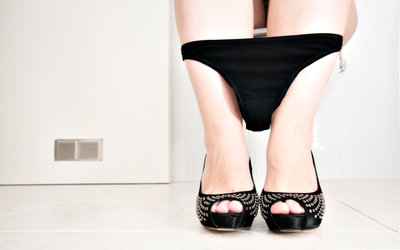Yeast Infections: How To Cure Them With Home Remedies
The symptoms of vaginitis affect most women at some point in their lives – the itching, burning pain, and discharge that comes with a yeast infection are uncomfortable and undesirable no matter what age you are unfortunate enough to develop this infection. Yeast infections are caused by organisms which inhabit the vagina – one of the most common causes is the fungus Candida albicans. Yeast infections can be successfully treated at home, but it’s still advisable what you speak to your GP to ensure that it is actually a yeast infection. There are a number of reasons why you may be experiencing your symptoms, so you should check before taking any medication or trying any remedies. But, if you’ve checked with your GP, or have had a yeast infection in the past and are sure that you’ve developed it again, these remedies may be useful to you. The first rule of thumb is to ensure that you keep the genital area dry and loose so that air can circulate. Yeast organisms like warm, moist conditions so by wearing fabrics that don’t breathe, you’re giving them the perfect environment to thrive. You should dry the vaginal area well after showering or bathing, then opt for a breathable fabric such as cotton underwear and loose trousers or a skirt to let the area breathe.
Practicing good hygiene is also important as yeast infections produce secretions when they are irritated. Yeast can also be passed on through sexual activity and through things like shared baths, so avoid bathing together or sharing towels. Try to wash your clothing in hot water too, to destroy the yeast organisms on your clothes. You can also add a cup of vinegar to the cycle to kill the yeast. Not only can alcohol and chemicals in certain body washes cause irritation, but they can also pH balance to the vagina, which gives the yeast chance to flourish. Routine douching isn’t wise if you don’t have vaginal symptoms, but it can help to balance the pH balance if you have a yeast infection. Live yoghurt can cool your symptoms and restore the friendly microorganisms in the vaginal area. Eating yoghurt can help, but you can also insert one to two tablespoons into the vagina and externally to the areas that are affected. As an alternative, you can also use a lactobacillus tablet vaginally once a day and douching with vinegar twice a day for two days.
Studies have also shown that boric acid is a safe way to treat yeast infections. If your doctor agrees that it is a good idea, you could try using a boric acid capsule as a suppository if you experience a flare-up of symptoms. However, if you’re pregnant then you should skip this. The most common treatment is an over-the-counter fungal cream which removes the yeast infection quickly and effectively. Both miconazole and clotrimazole are effective in treating this problem and are readily available in pharmacies and many supermarkets. Follow the instructions on the packet, and complete the full course of medication even if your symptoms seem to have disappeared as the infection may still be present. If you regularly get yeast infections around the time of your period, you may find it useful to use an antifungal cream a few days before and after your period, as a preventative. Lastly, cranberry juice can be useful as the acidity in the juice can kill any bacteria in your urethra and create an inhospitable environment for the bacteria.


Comments are closed.